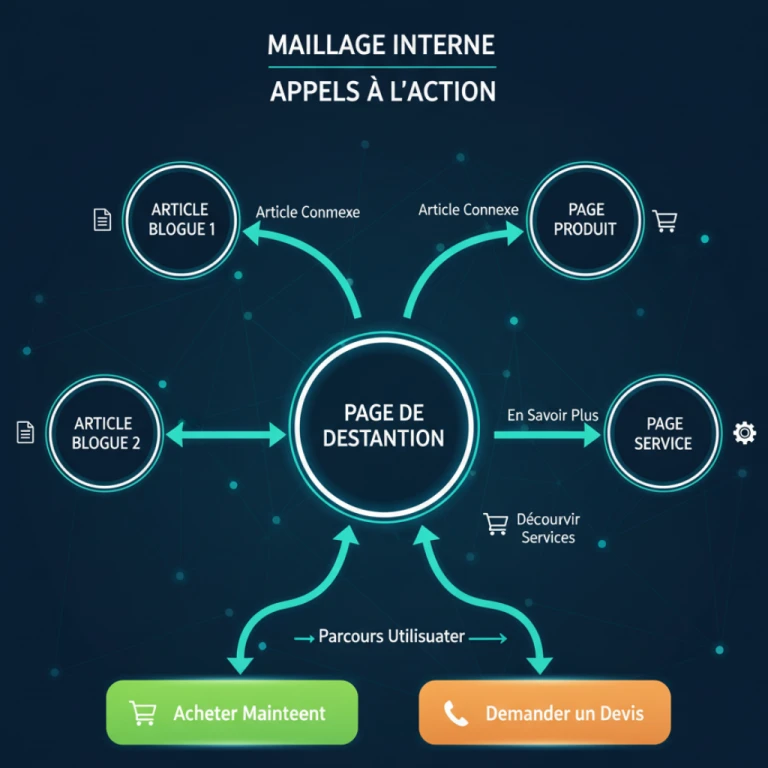Unlock Your SEO Potential: Why Content Reigns Supreme
In today’s fast-paced digital world, capturing attention is a constant challenge. That’s why SEO content has become the cornerstone of any effective SEO strategy. Gone are the days when simply stuffing a page with keywords was enough to please Google. Now, search engine optimization revolves around user-focused writing. Search engines prioritize understanding the intent behind every query and delivering the most relevant and comprehensive answers to users. High-quality content is your best ally for climbing the ranks.
Before diving into SEO writing, it’s crucial to understand how and why content influences your rankings as part of a well-structured SEO strategy.
In this guide, we’ll explain why content is essential, how to craft content aligned with your audience’s search intent, and which formats to prioritize for maximum visibility. Without a solid content strategy, even the most well-designed website will struggle to meet its marketing goals.
Step 1: Understand Why Google Prioritizes Quality Content

Before you write a single word, it’s essential to understand Google’s logic and expectations when it comes to content marketing. Google’s primary goal is simple: to deliver the best possible experience to its users. To do this, it highlights SEO content that meets specific criteria. Understanding these will guide your content creation for optimal results. Here are the key aspects to keep in mind:
- Usefulness and relevance : Does your content answer a specific question or solve a real problem for your audience? SEO content that genuinely adds value will always outperform vague or superficial writing.
- Credibility and expertise : Google rewards content that demonstrates true expertise (E-E-A-T: Experience, Expertise, Authoritativeness, Trustworthiness). Cite your sources, back up claims with data, and show you’re knowledgeable in your field with well-crafted SEO writing.
- Fresh and up-to-date : Regularly updating your content signals to Google that your information is current and reliable, which enhances user trust.
- Originality and evergreen content: Duplicate content is penalized. Offer unique perspectives or new insights. Focus on evergreen content—pieces that remain relevant over time and continue to drive traffic long after publication.
Once you understand this framework, you’ll see that creating content isn’t just about filling pages—it’s about building a lasting asset for your business and overall content marketing strategy.
Step 2: Align your content with search intent

The next step is to understand what users are truly looking for when they type a query. Ranking well depends on your ability to satisfy this search intent. There are generally three main types of intent:
- Informational intent : The user wants an answer to a question or to learn something.
- Examples: “How does SEO work,” “Best practices for Google Ads.”
- Content to create: Detailed blog posts, how-to guides, tutorials, infographics.
- Navigational intent : The user knows where they want to go and uses Google as a shortcut.
- Examples: “Tonus Marketing blog,” “Google Analytics login.”
- Content to create: Your homepage and key site pages should be perfectly optimized for SEO and integrated into your overall content strategy.
- Transactional intent : The user is ready to take action—buy, download, or sign up.
- Examples: “SEO agency in New York,” “Google Ads training cost.”
- Content to create: Service pages, product pages, case studies, contact pages.
Clearly defining the search intent behind each keyword you target allows you to create the right content for the right audience at the right time. This precise alignment between SEO writing and user intent is the foundation of an effective SEO strategy.
Step 3: Choose the Most Effective Content Formats

Analyzing content formats is essential to diversify your SEO strategy and engage your audience. Each format has its strengths and caters to different needs within a comprehensive content marketing strategy.
Here are some highly effective formats for SEO:
- Blog posts : Ideal for answering specific questions and targeting long-tail keywords. An active blog combining evergreen content with timely topics is one of the best ways to showcase your expertise and attract consistent qualified traffic.
- Comprehensive guides and tutorials : Also known as cornerstone content, these in-depth pieces establish your authority on a topic. They’re excellent for attracting backlinks and capturing leads by offering downloadable versions.
- Videos : Including videos in your content marketing can significantly increase the time visitors spend on your pages, which is a strong positive signal for SEO. Videos are also highly engaging and easily shareable on social media.
- Frequently Asked Questions (FAQ) pages : This format is perfect for targeting conversational queries, which are increasingly common with voice search. A well-structured FAQ can also help you capture Google’s “Featured Snippets.”
By diversifying your formats and including evergreen content, you enhance the user experience and increase your chances of appearing in search results.
Step 4: Integrate Internal Linking and Calls to Action

The final step, often overlooked, is ensuring that every piece of content works cohesively within your broader SEO strategy. Even the best articles shouldn’t be a dead end. They need to integrate into your site’s internal linking structure, supporting both user navigation and SEO.
Here’s how to make it work:
- Create a strategic internal network: Internal linking connects pages on your site, helping Google understand your site’s structure and discover new pages. For users, it improves navigation and encourages them to explore related content, increasing time spent on your site and maximizing the potential of your content marketing.
- Integrate clear calls to action (CTA) : Your SEO content has attracted a qualified visitor and answered their question. Now what? This is where CTAs come in. Every piece of content should guide users toward the next step: downloading a guide, scheduling a consultation, signing up for a newsletter, etc. A well-placed CTA converts casual readers into potential leads.
By following these four steps—from thoughtful SEO writing to strategic internal linking, search engine optimization, and evergreen content—you ensure your content strategy is well-rounded and results-oriented.
Make Your Content Work for Your Growth
Understanding Google’s priorities, aligning content with search intent, selecting the right formats (including evergreen content), and building a smart internal linking strategy are all essential steps to ensure your SEO content becomes a growth engine for your business.
Remember, quality SEO writing is a long-term investment. When your content marketing is backed by a solid SEO strategy and ongoing optimization, it offers a unique opportunity to strengthen your online presence, build trust with your audience, and stand out from the competition.
Once your content is live, monitor its performance and be ready to adjust as needed. By applying these tips, you’re on the path to a successful SEO strategy that will help you achieve your marketing goals.
At customized strategy, we help businesses create and optimize SEO content that boosts visibility and delivers measurable results.






